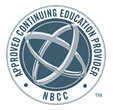Preventing Elder Suicide
One Time Cost of $99.00
Older adult suicide is a major public health problem. Older adults attempt suicide less often but are more likely to die on a first attempt. They are more frail, more isolated, and according to the World Health Organization have the highest rates of suicide in the world. To address this sliver tsunami of deaths by suicide, this skills-based training program is designed to prepare and enable the eldercare workforce to recognize and respond effectively to emerging suicide risk in older adults.
- 9 lessons
- 3 expert faculty
- Covers best practice tools for screening and assessment
- Bonus module on combating loneliness
Older adult suicide is a major public health problem. Older adults attempt suicide less often but are more likely to die on a first attempt. They are more frail, more isolated, and according to the World Health Organization have the highest rates of suicide in the world. To address this sliver tsunami of deaths by suicide, this skills-based training program is designed to prepare and enable the eldercare workforce to recognize and respond effectively to emerging suicide risk in older adults.
The Preventing Elder Suicide course is an expanded version of the 90-minute QPR training program. Requiring 4-hours, this course includes how to recognize suicide warning signs, how to intervene immediately to reduce risk, and how to employ existing best practice tools to assess and manage known suicide risk.
Modularized in a rich mix of text, video, voice-over PowerPoint™ lectures, interactive practice sessions, and other state-of-the-art e-learning technologies, this training program provides a dynamic, evidence-based foundation to suicide risk reduction practices.
This training program meets many state requirements for at least three hours of training in suicide prevention for those in allied health professional roles
Program Purpose
The Preventing Elder Suicide program is intended to prevent suicide not just among elders, but among employees, colleagues, co-workers, friends and family members.
WHAT THIS TRAINING PROGRAM IS NOT
This training is not a substitute for a college degree in counseling or other mental health profession, nor can it provide the face-to-face supervised experience those in the helping professions may receive during their professional training. The program does not teach suicide risk assessment skills. Suicide risk assessment training is provided in other QPR Institute programs.
Course Content
Participants who complete this course should be able to:
- Understand suicide as a major public health problem
- Understand the scope of the problem of suicide in aging populations
- Understand the common myths and facts surrounding suicide
- Identify unique verbal, behavioral, and situational suicide warning signs
- Be familiar with best-practice tools for screening and assessing risk
- Know how to inquire about suicidal intent and desire
- Recognize late-life psychiatric problems and suicide
- Recognize at least three suicide warning signs
- Recognize at least three risk factors for suicide
- Recognize at least three protective factors against suicide
- Demonstrate increased knowledge, skills, self-efficacy and intent to act to intervene with suicidal people and patients
- Describe social isolation as a risk factor and how to reduce that risk
- Know how to engage and assist an older adult.
- Be familiar with warm “hand-off” procedures to alert of staff of risk
- Know how to engage and assist a suicidal colleague or co-worker
- Describe "means reduction" and why it is important
- Describe and locate referral resources and how to access them
- Describe documentation decisions regarding care and referral
- Demonstrate and carry out an effective follow up for continuity of care

